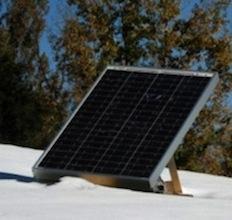February 18, 2014

New motor and drive systems are continuing to focus on several main design goals: more intelligent performance, higher energy efficiency, and flexible integration options. The result is macro trends that are putting increased focus on support for a broader set of motor types, advanced cooling options, and built-in safety features, along with tighter integration of motor-drive solutions and decentralized control.
Simplified system integration
"One of the main goals with the new ACS250 drive was to complete our microdrive portfolio of drive products, and to provide a microdrive solution that covers the most common voltages used in the US and globally," Greg Semrow, product manager of Low Voltage Drives for ABB Inc., told Design News.
With the industry providing drives for OEM machinery builders that sell equipment globally, a unique aspect of the product is an ability to provide a single-phase 115V input, and a three-phase 230V output for simple machine control. The ACS250 also provides a 600V microdrive for the Canadian market.

"A key feature of the new drive is the ability to provide feed-through wiring with power in through the top of the drive, and power out to the motor through the bottom," Semrow told us. "This is useful to address energy efficiency concerns and system engineers looking to replace older technology that doesn't offer the same levels of energy efficiency. Motor starters are used in applications that are typically wired with power in the top, and power out the bottom, so the new drive provides a drop-in replacement."
Replacing motor starters or soft starters with a drive can help improve overall energy efficiency, reduce mechanical stresses, and enhance process control. Using feed-through wiring, the ACS250 is designed to replace motor starters for general-purpose low-power applications such as augers, mixers, pumps, fans, and conveyors.
Key features include an integrated keypad to simplify application configuration, precise process control using an enhanced V/Hz control for variable and constant torque V/Hz profiles, and an embedded Modbus-RTU communication interface for real-time control and monitoring.
Decentralized control
"One of the trends in industry is that OEMs and end-users no longer want to mount drives in a centralized cabinet and would rather put the drive near or on the motor itself," Semrow noted. "This reduces some of the technical complications related to long motor lead lengths."
One variant of the ACS250 product includes an IP-20 drive that needs to be mounted in an enclosure. Another part of the offering is a NEMA 4X version, which offers a small footprint unit that can be mounted directly on the machine rather than in a control room enclosure.
With the move to more decentralized control and bringing the drive to the motor, Semrow said that in specific industries, ABB is seeing requests for a motor-drive package where the drive is integrated into or placed on top of the motor. The company has also developed a limited-scope product sold only to one customer, which is an integrated drive-motor intended for use with fans and pumps.
More built-in safety features
One global requirement that is being integrated as a built-in feature into drives is safety.
Semrow says OEMs in North America are now starting to request these features, not only for equipment shipping to Europe, but also for applications within the US. Historically, drives have used external devices to provide levels of safety. One of the key safety features is called Safe Torque Off (STO), which is basically a way to stop a drive safely.
About the Author(s)
You May Also Like





